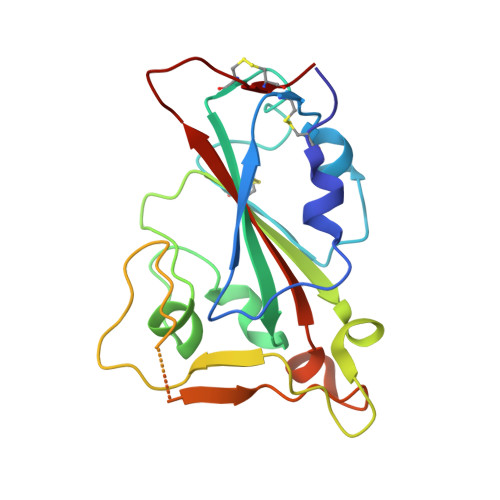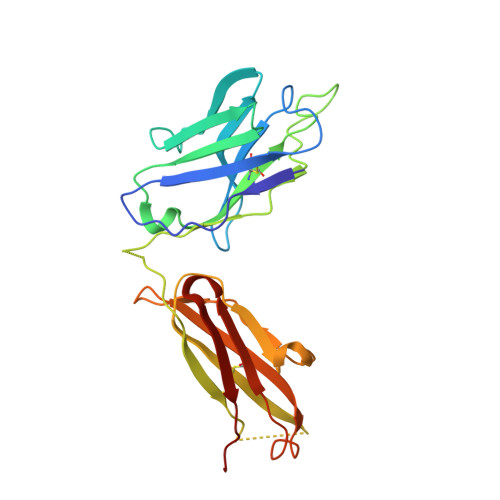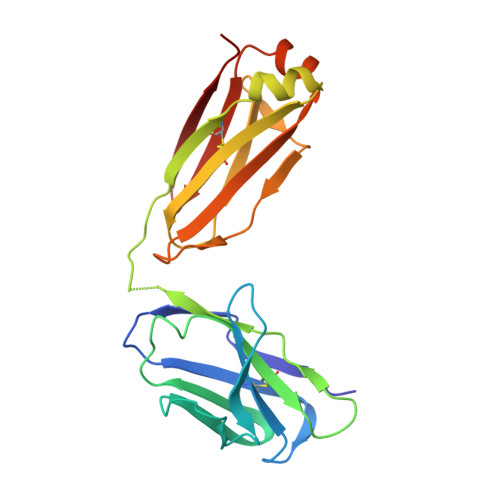Structural insights into broadly neutralizing antibodies elicited by hybrid immunity against SARS-CoV-2.
Luo, M., Zhou, B., Reddem, E.R., Tang, B., Chen, B., Zhou, R., Liu, H., Liu, L., Katsamba, P.S., Au, K.K., Man, H.O., To, K.K., Yuen, K.Y., Shapiro, L., Dang, S., Ho, D.D., Chen, Z.(2023) Emerg Microbes Infect 12: 2146538-2146538
- PubMed: 36354024
- DOI: https://doi.org/10.1080/22221751.2022.2146538
- Primary Citation of Related Structures:
7YKJ, 8DW9, 8DWA, 8DXS - PubMed Abstract:
ABSTRACT Increasing spread by SARS-CoV-2 Omicron variants challenges existing vaccines and broadly reactive neutralizing antibodies (bNAbs) against COVID-19. Here we determine the diversity, potency, breadth and structural insights of bNAbs derived from memory B cells of BNT162b2-vaccinee after homogeneous Omicron BA.1 breakthrough infection. The infection activates diverse memory B cell clonotypes for generating potent class I/II and III bNAbs with new epitopes mapped to the receptor-binding domain (RBD). The top eight bNAbs neutralize wildtype and BA.1 potently but display divergent IgH/IgL sequences and neuralization profiles against other variants of concern (VOCs). Two of them (P2D9 and P3E6) belonging to class III NAbs display comparable potency against BA.4/BA.5, although structural analysis reveals distinct modes of action. P3E6 neutralizes all variants tested through a unique bivalent interaction with two RBDs. Our findings provide new insights into hybrid immunity on BNT162b2-induced diverse memory B cells in response to Omicron breakthrough infection for generating diverse bNAbs with distinct structural basis.
Organizational Affiliation:
AIDS Institute, Li Ka Shing Faculty of Medicine, The University of Hong Kong, Pokfulam, Hong Kong Special Administrative Region, People's Republic of China.
















